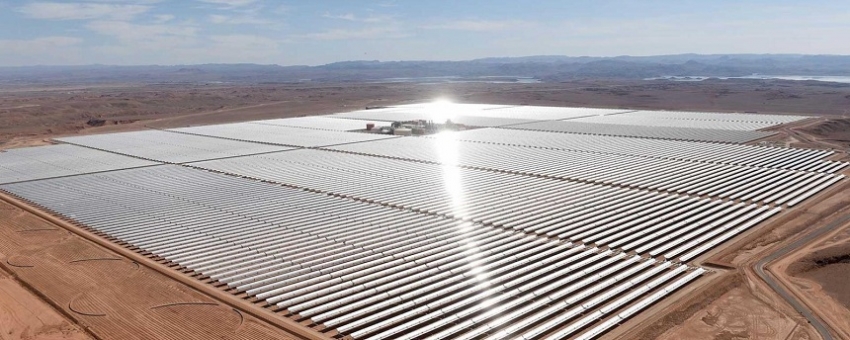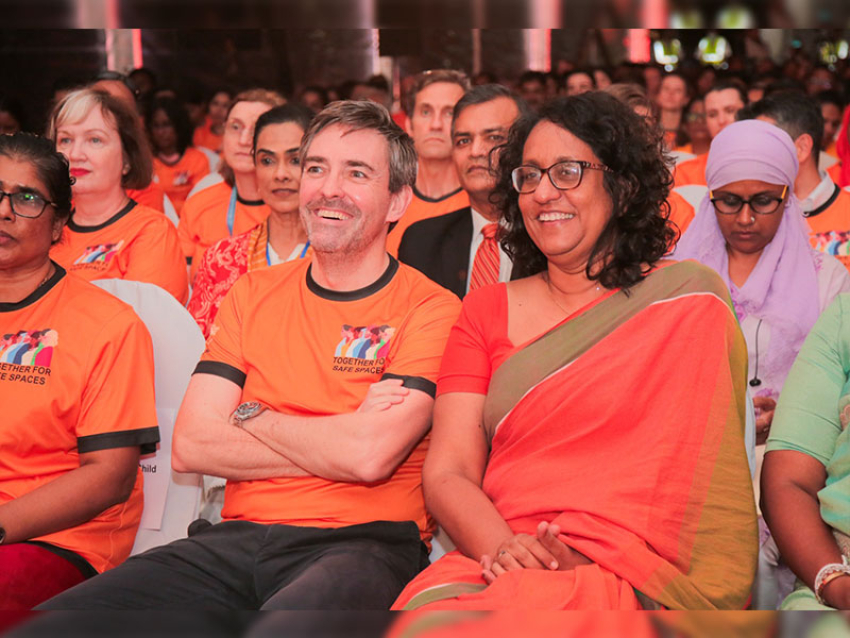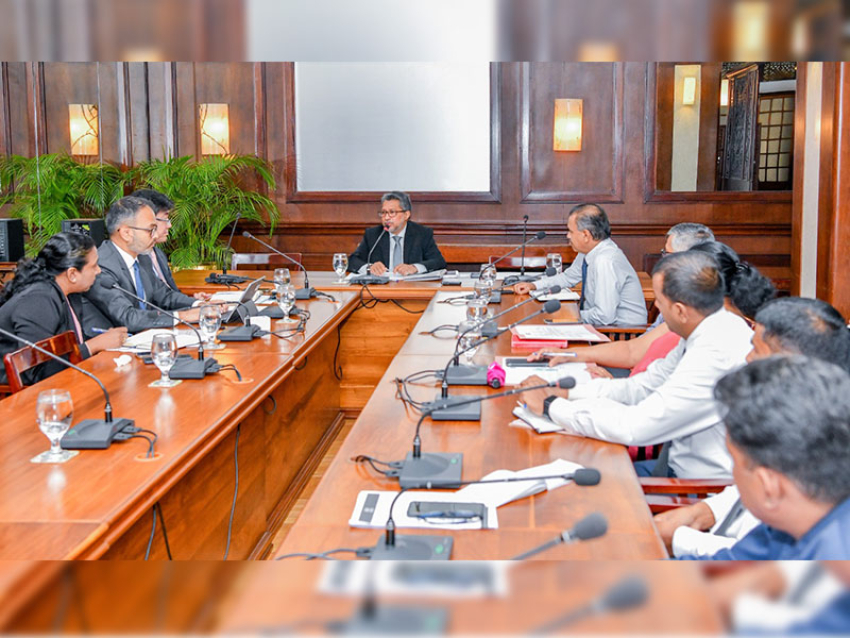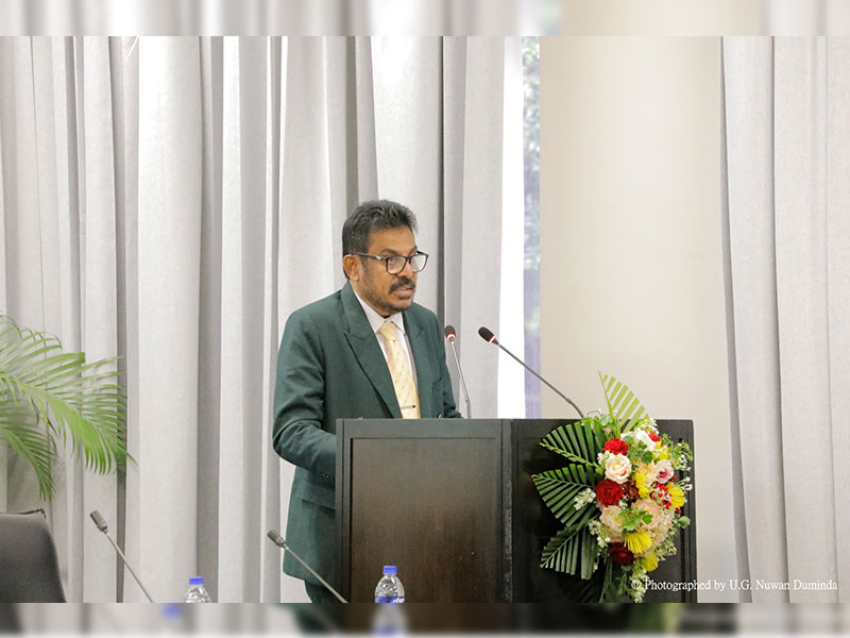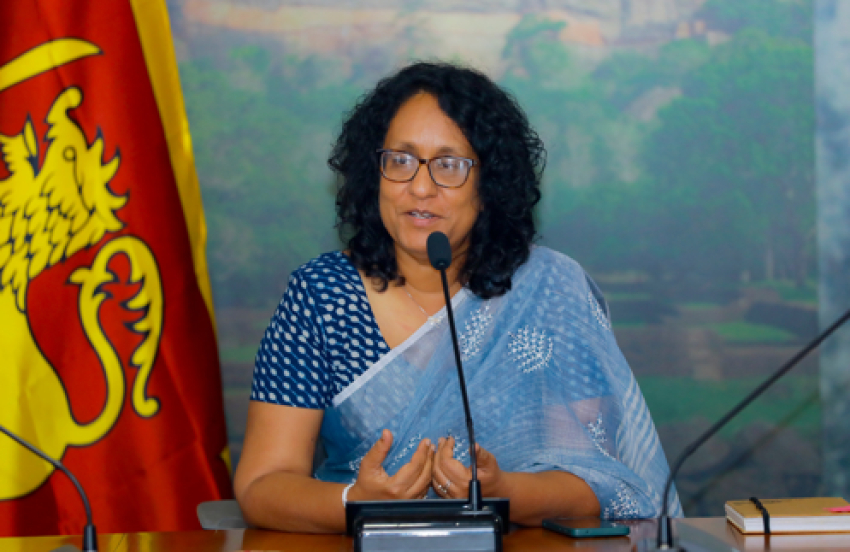Visions of a globalised future with renewable energy are wholly unrealistic unless we change the economy.
By Alf Hornborg From The Conversation
6 September 2019
Over the past two centuries, millions of dedicated people – revolutionaries, activists, politicians, and theorists – have yet to curb the disastrous and increasingly globalised trajectory of economic polarisation and ecological degradation. Perhaps because we are utterly trapped in flawed ways of thinking about technology and economy – as the current discourse on climate change shows.
Rising greenhouse gas emissions are not just generating climate change. They are giving more and more of us climate anxiety – public concern over climate change in the UK, for example, is at a record high. Doomsday scenarios are capturing the headlines at an accelerating rate. Scientists from all over the world tell us that emissions in 10 years must be half of what they were 10 years ago, or we face apocalypse. School children like Greta Thunberg and activist movements like Extinction Rebellion are demanding that we panic. And rightly so. But what should we do to avoid disaster?
Can you cool a house without air conditioning?Most scientists, politicians, and business leaders tend to put their hope in technological progress. Regardless of ideology, there is a widespread expectation that new technologies will replace fossil fuels by harnessing renewable energy such as solar and wind. Many also trust that there will be technologies for removing carbon dioxide from the atmosphere and for “geoengineering” the Earth’s climate. The common denominator in these visions is the faith that we can save modern civilisation if we shift to new technologies. But “technology” is not a magic wand. It requires a lot of money, which means claims on labour and resources from other areas. We tend to forget this crucial fact.
The cost of going green
As much as 90% of world energy use comes from fossil sources. Meanwhile in 2017, only 0.7% of global energy use derived from solar power and 1.9% from wind. So why is the long-anticipated transition to renewable energy not materialising?
For the most part, solar-powered transport, like Solar Impulse, is a novelty (Credit: Getty Images)
One highly contested issue is the land requirements for harnessing renewable energy. Energy experts have estimated that the “power density” – the watts of energy that can be harnessed per unit of land area – of renewable energy sources is so much lower than that of fossil fuels that to replace fossil with renewable energy would require vastly greater land areas.
In part because of this issue, visions of large-scale solar power projects have long referred to the good use to which they could put unproductive areas like the Sahara desert. But doubts about profitability have discouraged investments. A decade ago, for example, there was much talk about Desertec, a 400bn euro (£364bn) project that crumbled as the major investors pulled out, one by one.
Today the world’s largest solar energy project is Ouarzazate Solar Power Station in Morocco. It covers about 25 sq km (9.6 sq miles) and has cost around $9bn (£7.5bn) to build. It is designed to provide around a million people with electricity, which means that another 35 such projects – that is, $315bn (£262bn) of investments – would theoretically be required to cater to the population of Morocco. We tend not to see that the enormous investments of capital needed for such massive infrastructure projects represent claims on resources elsewhere – they have huge footprints beyond our field of vision.
Meanwhile, our global combustion of fossil fuels continues to riseThe cheapening of solar panels in recent years is to a significant extent the result of shifting manufacture to Asia. We must ask ourselves whether European and American efforts to become sustainable should really be based on the global exploitation of low-wage labour, scarce resources and abused landscapes elsewhere.
Also, we must consider whether renewable energy sources are really carbon free. Wind turbines and nuclear power remain critically dependent on fossil energy to produce, install and maintain. And each unit of electricity produced by non-fossil-fuel sources displaces less than 10% of a unit of fossil-fuel-generated electricity. At the current rate, the renewable power revolution is going to be very slow.
Meanwhile, our global combustion of fossil fuels continues to rise, as do our carbon emissions. Because this trend seems unstoppable, many hope to see extensive use of technologies for capturing and removing the carbon from the emissions of power plants and factories.
Of corse, it is easy to retort that until the transition has been made, solar panels are going to have to be produced by burning fossil fuels. But even if 100% of our electricity were renewable, electric-powered aircraft and boats are a novelty and not capable of replacing the masses of vehicles in our global transport networks. Likewise, steel and cement production – required for many renewable technologies – are still major sources of greenhouse gases.
Ouarzazate Solar Power Station in Morocco covers about 25 sq km (9.6 sq miles) and contributes about 1/35th of the country's power needsAmong most champions of sustainability, such as advocates of a Green New Deal, there is an unshakeable conviction that engineers can solve the problem of climate change. Central to the Green New Deal’s vision is a large-scale shift to renewable energy sources and massive investments in new infrastructure. This would enable further growth of the economy, it is argued.
The problem with global techThe general consensus seems to be that the problem of climate change is just a question of replacing one energy technology with another. But a historical view reveals that the very idea of technology is inextricably intertwined with capital accumulation. And as such, it is not as easy to redesign as we like to think. Shifting the main energy technology is not just a matter of replacing infrastructure – it means transforming the economic world order.
The viability of the steam engine relied on the flows of human labourThe steam engine, for instance, is simply considered an ingenious invention for harnessing the chemical energy of coal. While this might be the case, the steam-driven factories in 19th-Century Manchester would never have been built without the triangular Atlantic trade in slaves, raw cotton, and cotton textiles. Steam technology was not just a matter of ingenious engineering applied to nature – like all complex technology; it was also crucially dependent on global relations of exchange.
This dependence of technology on global social relations is not just a matter of money. In quite a physical sense, the viability of the steam engine relied on the flows of human labour and other resources that had been invested in cotton fibre from South Carolina, coal from Wales and iron from Sweden. Modern technology, then, is a product of the metabolism of world society, not simply the result of uncovering “facts” of nature.
Each unit of electricity produced by non-fossil-fuel sources displaces less than 10% of a unit of fossil-fuel-generated electricity (Credit: Getty Images)
Many believe that with the right technologies we would not have to reduce our mobility or energy consumption – and that the global economy could still grow. But is that an illusion? It suggests that we have not yet grasped what “technology” is. Electric cars and many other “green” devices may seem reassuring but are often revealed to be insidious strategies for displacing work and environmental loads beyond our horizon – to unhealthy, low-wage labour in mines in Congo and Inner Mongolia. They look sustainable and fair to their affluent users but perpetuate a myopic worldview that goes back to the invention of the steam engine.Is our goal to overthrow “the capitalist mode of production”? If so, how do we go about doing that?In making it possible to exchange almost anything – human time, gadgets, ecosystems, whatever – for money, people are constantly looking for the best deals, which ultimately means promoting the lowest wages and the cheapest resources in less developed nations.
Despite good intentions, it is not clear what Thunberg, Extinction Rebellion and the rest of the climate movement are demanding should be done. Like most of us, they want to stop the emissions of greenhouse gases, but seem to believe that such an energy transition is compatible with money, globalised markets, and modern civilisation.
Redesigning the gameIn order to see that "all-purpose money" is indeed a fundamental problem, we need to see that there are alternative ways of buying and selling. Like the rules in a board game, they are human constructions and can, in principle, be redesigned.
"Local money," like the Bristol pound, does not solve our dependency on global imports (Credit: Getty Images)
The only way to change the game is to redesign its most basic rules. The “system” is perpetuated every time we buy our groceries, regardless of whether we are radical activists or climate change deniers. It is difficult to identify culprits if we are all players in the same game. In agreeing to the rules, we have limited our potential collective agency.
National authorities might establish a complementary currency, alongside regular money, that is distributed as a universal basic income but that can only be used to buy goods and services that are produced within a given radius from the point of purchase. This is not “local money” in the sense of the Local Exchange Trading System (Lets) or the Bristol pound. With local money you can buy goods produced on the other side of the planet, as long as you buy it in a local store, which in effect does nothing to impede the expansion of the global market. Introducing special money that can only be used to buy goods produced locally would be a genuine spanner in the wheel of globalisation.
The only way to change the game is to redesign its most basic rulesThis would help decrease demand for global transport – a major source of greenhouse gas emissions – while increasing local diversity and resilience and encouraging community integration. It would no longer make low wages and lax environmental legislation competitive advantages in world trade, as is currently the case.Re-localising the bulk of the economy in this way does not mean that communities won’t need electricity, for example, to run hospitals, computers and households. But it would dismantle most of the global, fossil-fuelled infrastructure for transporting people, groceries and other commodities around the planet.Solar power will no doubt be a vital component of humanity’s future, but not as long as we allow the logic of the world market to make it profitable to transport essential goods halfway around the world. The current blind faith in technology will not save us. For the planet to stand any chance, the global economy must be redesigned. The problem is more fundamental than capitalism or the emphasis on growth: it is money itself, and how money is related to technology.Climate change and the other horrors of the Anthropocene don’t just tell us to stop using fossil fuels – they tell us that globalisation itself is unsustainable.
Bangladesh has been a vulnerable state for much of its short existence. People in this flood-prone country have coped with rising water levels with a combination of innovation, flexibility and resilience – but the extremes the environment is now throwing at them might be beyond anyone’s endurance.
s climate change accelerates, the pressures on rural Bangladeshis mount. Where previously people might have been able to move away for the worst of seasonal flooding, the regularity of waterlogging is making it impossible to farm. Crop varieties cannot cope with the saltwater, and career alternatives are limited.
ed land around their slum, Korail, in Dhaka, the capital city of Bangladesh (Credit: Ignacio Marin/ Institute)
Historically, people in Bangladesh had worked around seasonal flooding; farming for part of the year and retreating when water levels rose, or seeking work in the cities as land became unusable.By the end of the century, however, sea levels are expected to rise along the Bangladesh coastline by up to 1.5m. And that will come with more extreme seasonal fluctuations in sea levels. Disastrous storms and unusually high tides currently occur once each decade, but could become as regular as three to 15 times each year by 2100.As a result, rural Bangladeshis face a stark choice; change their way or life or seek employment and a home elsewhere.
“The climate is becoming more volatile so we are seeing higher frequency of migration,” says Joyce Chen, an economist at The Ohio State University. “Where in the past we see migration due to annual flooding, or river bank erosion, now we see saltwater intrusion more commonly which affects the environment long term. It makes it harder to grow crops because the land is permanently altered by the saline water.” In the past, he says, people could go to work in the city for a few months while the land was flooded and return when the flood had retreated. Now that is no longer possible. “People realise it is not viable to stay.”
Fishing nets have replaced rice pickers in Bangladesh (Credit: Ignacio Marin/ Institute)
Fishing nets have replaced rice pickers in much of rural Bangladesh (Credit: Ignacio Marin/ Institute)
For some, the saltwater offers an opportunity. Where rice might have once grown, shrimp farms are taking over – the saltwater providing the right environment to switch to aquaculture.
“When we look at people converting from agricultural production, households seem to maintain their production pretty well by switching to aquaculture,” says Chen. “They seem pretty resilient. But, the ways they are being resilient now need to be sustainable into the future. How sustainable will aquaculture be? If enough people convert and there is too much saline intrusion that could create new problems and distort the economy in ways people cannot predict.”
Villagers work to repair an artificial embankment (Credit: Ignacio Marin/ Institute)
Villagers work to repair an artificial embankment that protects their land from saltwater intrusion (Credit: Ignacio Marin/ Institute)
The art of re-routing water using earth walls to create artificial islands for farming is perhaps best-known as a Dutch initiative. People in Bangladesh have also taken to building polders, as they are known, to protect their farm land. However, tensions arise when some farmers want to protect their agricultural land, on which they are growing rice, from saltwater intrusion while neighbouring farmers might inundate their land with saltwater in order to start farming shrimp.
“Anecdotes suggest that building sea walls and structures to keep the seawater out may be creating problems more than helping in that it creates conflict,” says Chen. “There are groups that want to allow more saltwater in to convert from agriculture to aquaculture. It benefits those that want to convert but not everyone is doing so. The seawater and levees allow more control which in some cases worsens the salinity problem.”
Switching to aquaculture is leading to conflict (Credit: Ignacio Marin/ Institute)
The pressure to switch to aquaculture is leading to conflict between farmers and fishermen (Credit: Ignacio Marin/ Institute)
Chen says there may now be 100,000 people migrating each year due to saltwater flooding, but it is hard to estimate accurately because the changing wider economy is also affecting migration. A strong economy in India attracts workers, too, who often seek construction or agricultural work.
Mobile phones are one way to keep track of where people are moving, Chen has found. There are around 145m Sim card connections in Bangladesh, accounting for 87% of the population, although people change sim cards often and some people keep multiple phones. The high penetration of mobiles in Bangladesh is due to much of the population being reliant on them for banking. Mobile banking allows one person to work in a city as a migrant sending money home. Previously you might have had to wait several months for them to return with cash.
Bangladeshis are facing a choice; to migrate or stay (Credit: Ignacio Marin/ Institute)
Bangladeshis are facing a choice; whether to migrate to find work in cities or change their way of life (Credit: Ignacio Marin/ Institute)
“We see both types of migration going on in Bangladesh – better opportunities in cities attracting workers or, in the case of climate change, they are moving because changes in the environment are making it hard to make ends meet,” says Chen.
As a low-lying country, Bangladesh has always been a vulnerable area to changing sea levels, so adapting and migrating are not unusual demands. Chen says people in Bangladesh are on a good path of economic growth at the moment, but the volatile climate makes it hard to predict whether this growth will continue.
A villager stands in front of bamboo canes (Credit: Ignacio Marin/ Institute)
A villager stands in front of bamboo canes which will be used in construction (Credit: Ignacio Marin/ Institute)
Some Bangladeshis have tried to adapt their crops to the new conditions, but with limited success. “We have heard a little about switching to types of crops that are more saline-tolerant but I don't think there are that many varieties that exist,” says Chen.
Researchers in China have suggested that they have developed saltwater-resistant strains of rice, but there is little peer-reviewed evidence that these strains are viable, and the water in which the crops were tested contained only 10% the concentration of salt found in seawater.
Most migrants who head to Dhaka end up in slums (Credit: Ignacio Marin/ Institute)
Most migrants who head to Dhaka end up in slums similar to this one (Credit: Ignacio Marin/ Institute)
Migrants moving within Bangladesh are attracted to the larger cities which for the most part are on the coast. Chen warns that this still leaves many people vulnerable to the effects of rising sea levels. Those cities might become uninhabitable with rising tides and could result in many thousands of people needing to find homes elsewhere all at the same time.
Alternatively, some rural Bangladeshis are adapting their homes. “I have heard stories of a lot more people building their houses on stilts, or having retention ponds around farms,” says Chen. “I have heard some stories of schools moving onto boats so they can continue operating after flooding.”
Rural Bangladeshis have to take low-paid work (Credit: Ignacio Marin/ Institute)
Migrants from rural Bangladesh often have to take low-paid work, like sorting through plastic waste, when they reach the cities (Credit: Ignacio Marin/ Institute)
Some migrants seeking work in Bangladesh’s cities find themselves picking through other people’s waste. Children and families can earn money by picking out recyclables. Large quantities of plastic waste, for example, wash into cities in flood water. The labour is hard, and the returns are small, but many workers might be faced with few alternatives.
Workers load plastic into a mill for processing (Credit: Ignacio Marin/ Institute)
Workers load recyclable plastic into a mill for processing (Credit: Ignacio Marin/ Institute)
With few opportunities facing unskilled labourers, finding work when reaching a new city can be hard. One problem facing those responsible for protecting migrant workers in Bangladesh is that those who are most vulnerable are the least able to relocate, Chen warns.
“The most vulnerable people might be stuck in place, says Chen. “People with greater means will be able to move out of vulnerable areas, but those worst affected might be stuck.”
“It will be hard to address the needs of those folks.”
A child looks over the polluted Buriganga river (Credit: Ignacio Marin/ Institute)
A child looks over the polluted Buriganga river that flows through slums in southwest Dhaka (Credit: Ignacio Marin/ Institute)
For Chen, the next project involves looking at how migration is affecting the lives of the most vulnerable people in society – children. “There is some evidence that migration due to saline water inundation affects educational outcomes, food insecurity affects health, too,” says Chen.
For many, food insecurities result in a trade-off between personal health and the welfare of their livestock – some of the most valuable assets rural families own. “People talk constantly about how hard it is to get fresh water in Bangladesh – they call it sweet water,” says Chen. “And they have to save the sweet water for their livestock.”
While scientists might develop saltwater-resistant crops in time, and some Bangladeshis will find work in aquaculture, the more immediate concerns of health and safety – of survival – are a big motivator for migrants in Bangladesh. People will go where the water tastes sweetest.
Buy one that is independently certified (Credit: Getty)
Comment & Analysis Climate change
An alternative to flying less?
Air travel has a gigantic carbon footprint. And while carbon offsets are imperfect, they make a difference. Here’s how.
Share on Facebook
Share on Twitter
Share on Reddit
Share on LinkedIn
Share on Google+
Share by Email
By Christopher J Preston
19 April 2019
You desperately want to book that flight for the family wedding. But two major reports in autumn 2018 – the frightening Fourth National Climate Assessment released by the US Global Change Research Program along with the Intergovernmental Panel for Climate Change (IPCC) report – have flipped on the guilt switch for you. Climate change used to be a faint background murmur you could ignore when there were fun places to go. But these reports are clear: it’s here, and it’s bad.
A girl carries water in the midst of the worst drought in living memory in Afghanistan
A girl carries water in the midst of the worst drought in living memory in Afghanistan, the type of event experts agree we are seeing more of due to climate change (Credit: Getty)
The good news is, you can offset the carbon generated by your air travel. Offsetting is simple and surprisingly cheap to do. While you put greenhouse gases into the atmosphere in one place, somebody else is paid to take them out in another.
Numerous sceptics frown upon this tool, arguing that it is ineffective or even unethical.
The doubts are worth investigating. I have been offsetting my flying for the last few years and, as an environmental ethicist, I want to get this right. So here is how I think the arguments stack up.
You might also like:
• How brain biases prevent climate action
• Ten simple ways to act on climate change
• A simple reason we aren’t acting faster on climate change?
Argument 1: Offsets just allow the rich to keep on polluting while easing their guilt.
Offsets do allow payers to keep polluting, and they are mostly used by the rich. But think about it. Stopping people from flying is not the primary purpose of the offset. In my case, I’m committed to visiting overseas family from time to time. It’s an emissions burden I’m stuck with. By buying offsets, I shrink the harm I cause no matter what. My primary goal is not to lessen the guilt but to lessen the impacts.
Changing behaviour is not the primary purpose of the offset; reducing harm is. In this regard, they work
If an additional policy mechanism were placed on top of the offsets (for example, a very high price on carbon or an imposition of a carbon emissions cap) then people may feel some economic pressure to fly less. But changing behaviour is not the primary purpose of the offset. Reducing harm is. In this regard, they work.
Argument 2: Offsets don’t do anything.
Do carbon offsets actually reduce harm? It would surprise me if the small amount of money I pay for an offset will actually remove all the carbon I am responsible for emitting during my flight. How can I be sure the carbon removal I’m paying for wouldn’t have happened anyway? Or that it’s not just temporary or shifted to another location?
Buy one that is independently certified (Credit: Getty)
To ensure that a carbon offset is doing what it’s meant to, buy one that is independently certified (Credit: Getty)
To address this, buy offsets that are independently certified to provide precisely these assurances. Standards such as the Gold Standard, the Verified Carbon Standard, and Climate Action Reserve exist to help individuals buying carbon offsets feel confident their money is doing what they intend it to do. Although providing this reassurance remains complicated and a healthy scepticism is appropriate, I trust that concerned and informed people are working hard to make sure purchased offsets do what they claim.
Argument 3: Carbon offsets contribute to global injustice.
Some argue that by allowing the rich to buy themselves out of their guilt, carbon offsets end up exacerbating the injustice caused by climate change.
The painful reality of climate change is that the people suffering the greatest burdens are typically those who are least responsible for the problem and least economically equipped to adapt to changing and dangerous conditions. And it’s true that if all offsets do is to validate pouring more and more carbon into the atmosphere, they might indeed make poor people’s lives worse.
The people suffering the greatest burdens of climate change are those least responsible
The people suffering the greatest burdens of climate change are typically those who are least responsible for the problem (Credit: Getty)
Fortunately, there are reasons to think they do exactly the opposite. Carbon offsets invested in the developing world represent a transfer of wealth – albeit a small one – from the rich to the poor. Such transfers can reduce global injustice if they are invested in infrastructure that improves the lives of those at risk. For example, in forest restoration, renewable energy infrastructure or more efficient cook stoves. To the extent they provide a buffer against the effects of climate harms already occurring, they are on the right side of the moral ledger.
Argument 4: Offsets only serve to indicate how unwilling you are to change your wasteful ways.
Yes and no. Buying a carbon offset is only necessary if you are committed to carrying on emitting carbon. And the reality is that, with current transportation infrastructure, most of us are.
Some carbon offsets work by investing in renewable energy projects such as geothermal
Some carbon offsets work by investing in renewable energy projects such as geothermal (Credit: National Renewable Energy Lab/Creative Commons)
On the other hand, paying for a carbon offset indicates a willingness to put your money where your mouth is. It can increase renewable energy generation infrastructure and create visible examples of greenhouse gas reduction projects. Restored and protected forests, methane capture projects, and solar and wind farms are a statement about a certain kind of future. If you tell your friends what you are doing, offsetting also creates a social pressure for others to recognise there is a cost to carbon.
Some caveats
To be sure you are on the right side of the offsets debate, a few more conditions must be met:
Buying an offset is a stop-gap measure. Nobody should think this is all they have to do to address climate warming
First, any offsetting must be accompanied by continued efforts to reduce your own emissions and to persuade elected officials to pursue a less carbon-intensive path. Buying an offset is a stop-gap measure. Nobody should think this is all they have to do to address climate warming.
Second, even as you purchase offsets, remain sceptical about whether the shockingly small amount they cost is actually enough. To compensate, consider purchasing 25% or 50% more offsets than the trip demands.
It’s important to remain sceptical
It’s important to remain sceptical about whether the shockingly small amount a carbon offset costs is actually enough (Credit: Getty)
Third, offsets should not provide an excuse for shifting the burden of climate change mitigation entirely to individuals. Nothing you do is going to come close to what corporations and governments must accomplish on a far larger scale.
With these conditions in place, however, the conclusion is clear. Though not a perfect fix, the moral argument leans strongly toward purchasing offsets. They are absolutely an imperfect tool. But they absolutely make a difference.
Accessibility links
Skip to contentAccessibility Help
Sign in
News
Sport
Reel
Worklife
Travel
Future
More
Search the BBC
Search
Search the BBC
Future
What is BBC Future?
Latest
Best of..
NEW SERIES
Follow the Food
TOMORROW'S TRENDS
Future Now
Sun and clouds on wondow (Credit: Getty Images)
Design Climate change
Can you cool a house without air conditioning?
As global summer temperatures rise, more buildings are installing energy-hungry air conditioners – a major contributor to climate change. But are there ways to cool buildings down without turning the AC on?
Share on Facebook
Share on Twitter
Share on Reddit
Share on LinkedIn
Share on Google+
Share by Email
By Martha Henriques
23 August 2019
At first sight, the view could be mistaken for the rolling hummocks of Hobbiton, right down to the perfectly circular doors opening out of the lush green hillside. But the doors are made of glass, and inside them are not cosy hobbit holes but an array of large mechanical steel arms and levers holding some of the doors ajar.
These hills are part of the roof of the California Academy of Sciences in San Francisco, US. The undulating green roof is one of a series of engineering and design features that make the academy one of the largest passively ventilated spaces in the US. This means that even in the peak of summer, the bulk of this building relies on clever manipulation of the elements to stay cool, with next to no air conditioning.
You might also like:
Ten simple ways to act on climate change
The animals that will survive climate change
Could wooden buildings help fight climate change?
Roofs like these are one way that architects, engineers and designers are rethinking buildings to find ways to keep them cool without air conditioning. The challenge is becoming increasingly urgent; it has been yet another scorching year, with heatwaves steamrolling Australia, southern Asia, North America and Europe. To deal with heatwaves, made more frequent by climate change, the number of AC units is expected to more than triple worldwide by 2050. As well as guzzling huge amounts of electricity, AC units contain refrigerants that are potent greenhouse gases. These refrigerants are in fact the fastest-growing source of greenhouse gas emissions in every country on Earth.
California Academy of Sciences in San Francisco, US (Credit: Cody Andresen)
The intriguing design of the California Academy of Sciences is built to promote cooling air movement around the building (Credit: Cody Andresen)
But there are alternatives, and plenty of them. From ancient building designs that have been tried and tested over 7,000 years, to the cutting-edge technologies at the California Academy of Sciences, it is possible to create buildings that stay cool with virtually no energy requirements at all.
At the academy, the roof’s grassy domes divert the natural flow of air inside the building. As the wind blows across, one side of the hills is at negative pressure, which helps to suck air through the automatically controlled roof windows and into the building. The fact that the roof is covered with vegetation also helps to bring the temperature down in the space below, as well as providing a habitat for wildlife above.
What about the much more ordinary, everyday buildings that most of us spend the majority of our time in?
“We start off with the attitude of how far can we go in designing the building on the assumption that we’re not going to have AC,” says Alisdair McGregor, global leader for mechanical engineering at Arup, who was involved in the building’s design. But it’s rare to fully climate-control the whole building by that approach, he adds. There might be constraints imposed by a noisy motorway next to a building, making it unfeasible to open the windows. Or the building could have a lot of hot equipment or people with particular needs, such as in a hospital. But at least it means that AC, along with its costs and emissions, is reduced to the bare minimum.
An air conditioning unit on the roof of a building in summer
Conventional air conditioning releases greenhouse gases into the atmosphere, contributing to global warming (Credit: Getty Images)
The California Academy of Sciences is a pinnacle in passive design. But it was also an almost half-billion-dollar project with access to some of the best engineers and architects in sustainable development. What about the much more ordinary, everyday buildings that most of us spend the majority of our time in – can passive cooling also make them heatwave-proof?
Water
One of the simplest forms of passive cooling makes use of the temperature change in the air when water evaporates. Water requires energy to go from the liquid state to vapour, and it takes that energy from the air in the form of heat.
“Evaporative cooling is a natural phenomenon,” says Ana Tejero González, an engineer at Valladolid University in northern Spain. “We can see a lot of examples in nature where this happens.” It can cool a surface as well as a body of air, such as your skin when you sweat, or a dog’s tongue when it pants.
A close up of a Spanish botijo
The botijo aids in evaporative cooling by allowing water to permeate through its clay walls (Credit: Getty Images)
In González’s region of Spain, a traditional vessel called a botijo uses the same principle. The botijo is a large pot made of porous clay and used to carry water or wine, which farm labourers would take out into the fields. Small amounts of the drink evaporates through pores in the clay walls, keeping the liquid inside cool even under the hot Spanish sun.
In architecture, the use of evaporative cooling goes back to ancient Egypt and the Romans. But some of the more elaborate examples are from Arabic architecture and a structure called the mashrabiya. A mashrabiya is an ornate, traditionally wooden lattice carved with intricate designs, found on the outside or the inside of a building. As well as providing shade, in the summer the mashrabiya would be home to porous earthenware pots – like the botijo – filled with water. These would help to cool the room as a breeze flowed through the mashrabiya and over the pots.
Even in exposed, hot and arid climates, cooler temperatures are never too far away
But there are even simpler ways to harness evaporative cooling in a building or outside space. A body of water in a courtyard – a pond, fountain or runnels of water flowing throughout the space – all do the same job. And inside, placing an earthenware pot of water near a window or draughty spot can help to cool the place down.
Earth
If currently temperate regions of the global north are going to become equipped to deal with routine extreme heat, there is a lot to be learned from buildings, both ancient and modern, in the global south, says Manit Rastogi, a founding partner at the architectural firm Morphogenesis, based in India. “This part of the world has always been hot,” says Rastogi. Passive cooling systems have been a matter of necessity for thousands of years. “Most of the architecture we’ve done traditionally here are phenomenal examples of achieving cool conditions without mechanical means.”
Even in exposed, hot and arid climates, cooler temperatures are never too far away. In Jaipur, the capital of Rajasthan state in northern India, daytime temperatures regularly reach upwards of 40C in the summer months. But just a few metres below ground, the temperature of the earth in the region remains a much gentler 25C, even through the fiercest summer heat.
An aerial view of the city of Jaipur, India
In the city of Jaipur, India, summer temperatures reach 40C and higher (Credit: Getty Images)
The solution is to dig down, says Rastogi, who designed the Pearl Academy of Fashion in Jaipur using this principle. Rastogi and his colleagues used a traditional Indian stepwell, or baoli, within an internal shaded courtyard at the academy. Banks of grey stone steps lead down seamlessly to the edge of a large, still pool of collected rainwater and treated wastewater from the building. The pool, cooled by the subterranean temperatures, absorbs a substantial amount of heat from the courtyard, keeping the air fresh. “Digging into the earth is very, very effective,” says Rastogi.
While it might be an attractive solution, digging an enormous well inside your property isn’t necessary to make use of the same phenomenon. Commercial ground source heating and cooling systems also make use of the earth’s more or less stable year-round temperature by pumping a liquid through buried pipes outside. The liquid’s temperature falls to that of the earth, and is then pumped back inside, where it can run through underfloor pipes to cool the house down. These systems can be used to both heat buildings in winter and to cool them in summer. Global uptake of them for heating has been slow, but they are becoming increasingly popular for cooling, particularly in northern Chinese cities in the summer.
A lot of these strategies are about being in touch with nature and understanding how it works – Manit Rastogi
Besides its baoli, the Pearl Academy of Fashion in Jaipur uses a few other tricks to keep the temperature down. From the outside, the building is a simple rectangular shape, which may not look very elegant but has the benefit of maximising the amount of internal space for external surface area, as every square foot exposed to the Sun absorbs heat. The building is shrouded in a jaali, or perforated stone “skin” about four feet from the outer walls, which helps to shade the building and buffer the temperature. “A lot of these strategies are about being in touch with nature and understanding how it works,” says Rastogi. “Understand the site and that particular typology, and the job will be a lot easier.”
The result is that interior of the academy is a fairly tepid 29C even in the hottest months, when temperatures outside are regularly more than 40C. This allows air conditioning to be used very modestly, when it is necessary at all.
Wind
The city of Yazd in Iran is known as “windcatcher city”. The windcatchers are towers with arched glassless windows sat atop flat-roofed buildings, facing the direction of the prevailing winds. For centuries, these towers have caught the breeze and channelled it down to the dwellings, split into channels by a series of blades within the tower. The arched roof of the windcatcher helps to encourage circulation of air even when there is not a strong breeze blowing. Sometimes the air flows over a basin of water, or even a deep reservoir in a domed chamber, to encourage further cooling.
A sketch of a ground source heating and cooling system outside a house
Ground source heating and cooling systems use the earth's stable subterranean temperature to regulate the indoor climate (Credit: Getty Images)
The windcatchers of Yazd are among the most varied and creative in the Middle East, according to research by Mahnaz Mahmoudi Zarandi, an assistant professor of architecture at the Qazvin Islamic Azad University in Tehran. An analysis of Yazd’s windcatchers found that the most effective models decreased air temperature indoors from 40C to 29.3C.
In ordinary buildings that aren’t fortunate enough to have a windcatcher built in, there are still options, says Arup’s McGregor. Having windows open on different sides of a building at different heights can help to pull air through. “You sometimes see that effect too much, and you almost get a howling gale through,” says McGregor. “For example, a tall atrium with an opening at the top and a door at the bottom. But by varying the openings, you can control the air flow through the building.”
Concrete jungle
Thinking on the scale of individual buildings, however cleverly designed, can only bring the thermostat down so far. But understanding the way that buildings interact with the rest of the urban landscape can help bring it down a notch further.
Even without skyscraper-sized magnifying glasses scorching the pavements, there is the issue of the urban heat island effect
The London skyscraper known as the “walkie-talkie” provides a lesson in how not to do this. The building has one giant concave face. While it might look fancy, there is a reason that inward-curving skyscrapers aren’t very common. Before the building was completed, it was discovered that the vast shiny concave surface acted like a magnifying glass, focusing the Sun’s rays on one small area. That focus happened to be a few metres of pavement outside a hairdresser’s and a Vietnamese restaurant. The result was temperatures so hot that paint melted, car parts blistered and buckled, tiles shattered and a doormat set on fire.
An aerial view of Chengdu, China, showing green leafy roofs and walls of buildings
Lush vegetation helps to keep cities such as Chengdu, China, cool in summer (Credit: Getty Images)
The problem has now been fixed thanks to the addition of a last-minute brise soleil, or giant sunshade made of aluminium slats. But it shows how profoundly a design tweak can alter the temperature of the urban landscape. Even without skyscraper-sized magnifying glasses scorching the pavements, there is the issue of the urban heat island effect – where dull, grey concrete absorbs the Sun’s heat and radiates it back out onto sweltering pedestrians, like a highly unnecessary hot water bottle.
We might think of the heat-island effect as a necessary evil of summer in the city. But urban spaces can be adapted to reduce it. One of the most effective ways is by bringing in some vegetation. We all know this intuitively – it is the difference between the shady tree-lined boulevards of a city like Palma, Majorca, and the blistering exposed sidewalks of New York.
In Medellín, Colombia, the city authorities have been experimenting with “green corridors” through the city. They developed 30 green corridors in otherwise grey parts of the city, making use of the verges of 18 roads and 12 waterways. These green strips lowered temperatures by 2C. A study by Monica Turner, an ecologist at the University of Wisconsin-Madison, showed that even broader tree cover can reduce urban temperatures by up to 5C.
Even in a passively cooled building in a well-designed city, sometimes these design measures are not going to be enough
Many cities are taking similar steps. Milan’s municipal authorities plan to plant three million trees in the city by 2030. Melbourne, Australia, has also begun a tree-planting programme to keep the city liveable through future heatwaves. And new cities, such as China’s Liuzhou Forest City are able to weave in vegetation cover from the start.
Exit strategy
Of course, even in a passively cooled building in a well-designed city, sometimes these design measures are not going to be enough. In a hospital full of heat-generating equipment and vulnerable people, there will be cooling requirements that go beyond what passive systems can achieve. “Here, we don’t care about the energy so much – we just need to achieve the right thermal conditions indoors,” says Valladolid University’s Tejero González.
But the bottom line is that conventional air conditioning should be a last resort, not a crutch. Perhaps the most promising thing about passive cooling, McGregor adds, is that it offers a way out of the vicious cycle we are currently stuck in with air conditioning: using a technology to keep cool that actually contributes to heating the world up.

